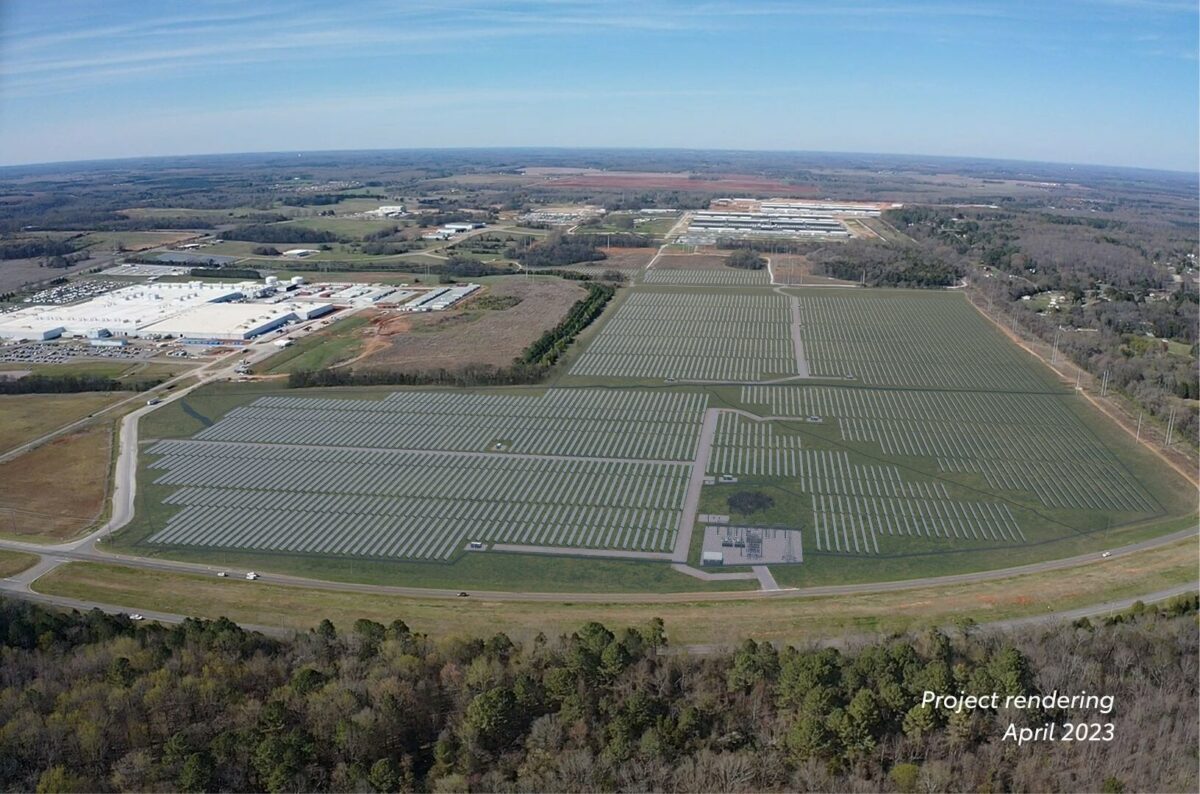Auto manufacturer Toyota announced it has entered into a power purchase agreement for a 30 MW solar project that is expected to power 70% of its operations at North Huntsville Industrial Park in Alabama.
TAI Energy Infrastructure Solutions led the project’s development and will manage construction, which is planned for spring 2023. The company will serve as long-term owner-operator. The 30 MW corporate solar project will interconnect to Huntsville Utilities, a municipal electricity provider operating in large utility Tennessee Valley Authority’s territory.
Since Toyota Alabama started production in 2003, the plant has expanded six times, representing a $1.5 billion investment. In 2022, Toyota Alabama’s 1,900 employees assembled more than 665,000 engines and hybrid engines. The plant supplies engines for popular Toyota vehicles such as the Tundra, Corolla Cross and Sienna.
The solar project, valued at $49 million, spans 168 acres and will surround the area around the manufacturing site. It is expected to generate 62,000 MWh annually, offsetting roughly 22,000 metric tons of carbon dioxide emissions, or the equivalent demand of about 5,600 homes.
The project marks another step toward Toyota’s goal of carbon neutrality by 2035.
“By relying on the sun to power our operations, we will reduce our carbon footprint and create a model of environmental stewardship in North Alabama,” said Jason Puckett, president of Toyota Alabama.
Corporate solar procurement is steadily on the rise. According to the Solar Energy Industries Association (SEIA), corporations in the United States have installed nearly 19 GW of on-site and off-site capacity, which doubles the amount that had been installed through 2019.
“From data centers to industrial freezers, the most energy-intensive business operations are turning to solar as the most reliable and affordable way to power their infrastructure,” said Abigail Ross Hopper, president and chief executive officer, SEIA.
Meta (formerly Facebook) increased its installed solar capacity from 177 MW in early 2019 to 3.6 GW in 2022 and now has the largest corporate solar portfolio in the United States. Target remains the top onsite corporate solar user, while Microsoft joins the top 10 after installing 479 MW of new capacity since 2019.
Toyota clean energy
In March, one of the top 100 largest car dealerships in the United States, Arlington Toyota of Palatine, Illinois, commissioned Texas installer Solar One to build a 1,734-module solar array on its 2.9-acre building.
The rooftop solar array generated 256,930 kWh of electricity in its first five months of operation, offsetting 50% of the site’s demand. It also offset the dealership’s carbon dioxide emissions by 128 tons.
The installation was built and financed by Solar One, and the initial investment will be recouped once Arlington Toyota takes in incentives like Solar Renewable Energy Certificates (SRECs), rebates from the state of Illinois, and the federal investment tax credit.
In September 2022, Toyota announced a $2.5 billion investment in an electric vehicle battery manufacturing plant in North Carolina. Toyota has a target of 40% of new vehicle sales in the U.S. to be electrified vehicles by 2025, and the target increases to 70% by 2030. With the new investment in its North Carolina battery manufacturing facility, the total commitment to advancing its battery production is now $5.6 billion.
And in August 2022, Toyota Motor North America announced it is partnering with the National Renewable Energy Laboratory (NREL) to construct, install, and test a 1 MW proton exchange membrane fuel cell power generation system at the NREL Flatirons campus in Arvada, Colorado. The pilot program is a 3-year, $6.5 million project funded by the Department of Energy’s (DOE) Hydrogen and Fuel Cell Technologies Office, part of DOE’s Office of Energy Efficiency and Renewable Energy.
The 1 MW system integrates multiple Toyota fuel cell modules to create a dispatchable stationary power system. In a previous partnership between the two, NREL demonstrated the use of an automotive fuel cell system to provide carbon-free power for a data center. This new test system is about 15 times the size of the previous test and is capable of both direct current and alternating current power output.
This content is protected by copyright and may not be reused. If you want to cooperate with us and would like to reuse some of our content, please contact: editors@pv-magazine.com.









Nothing like high uility prices and cheap solar to make America Green.